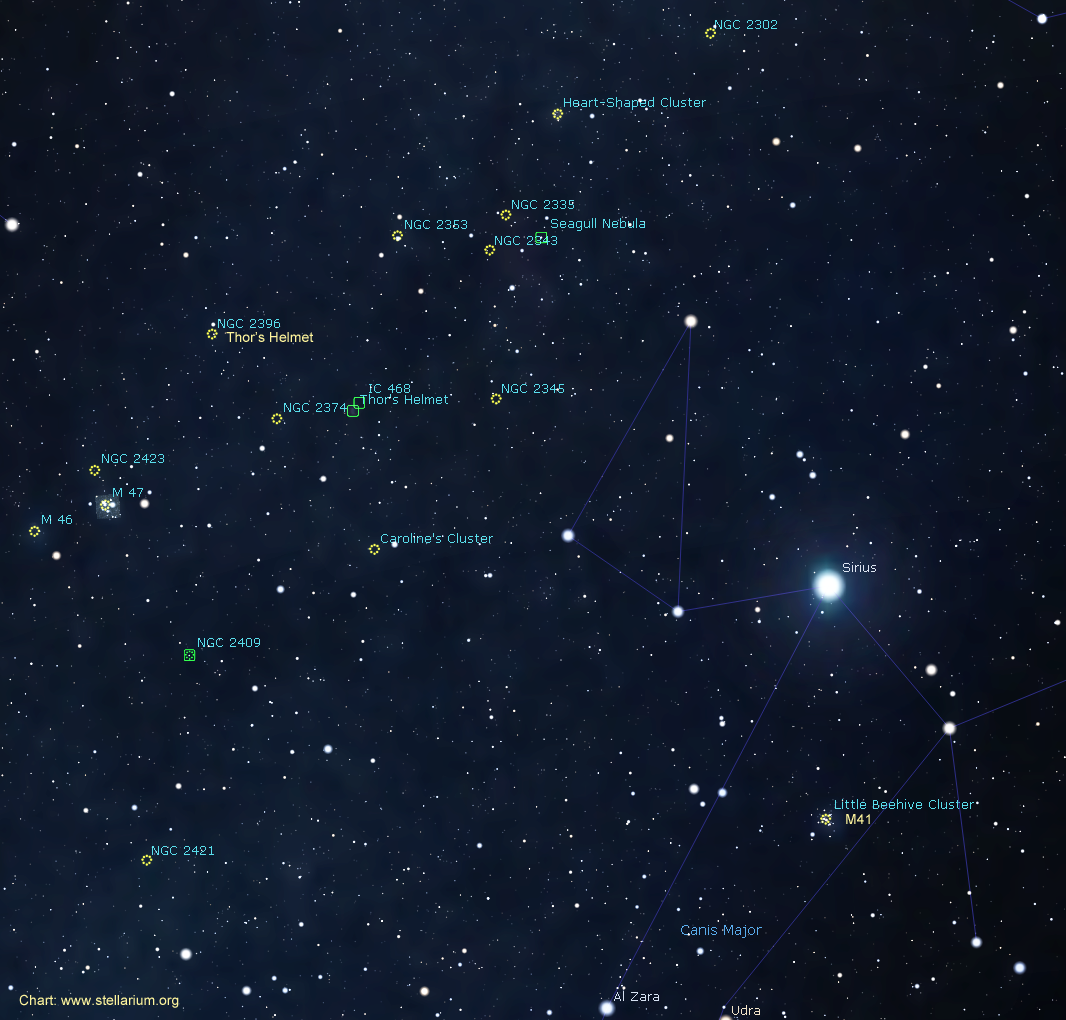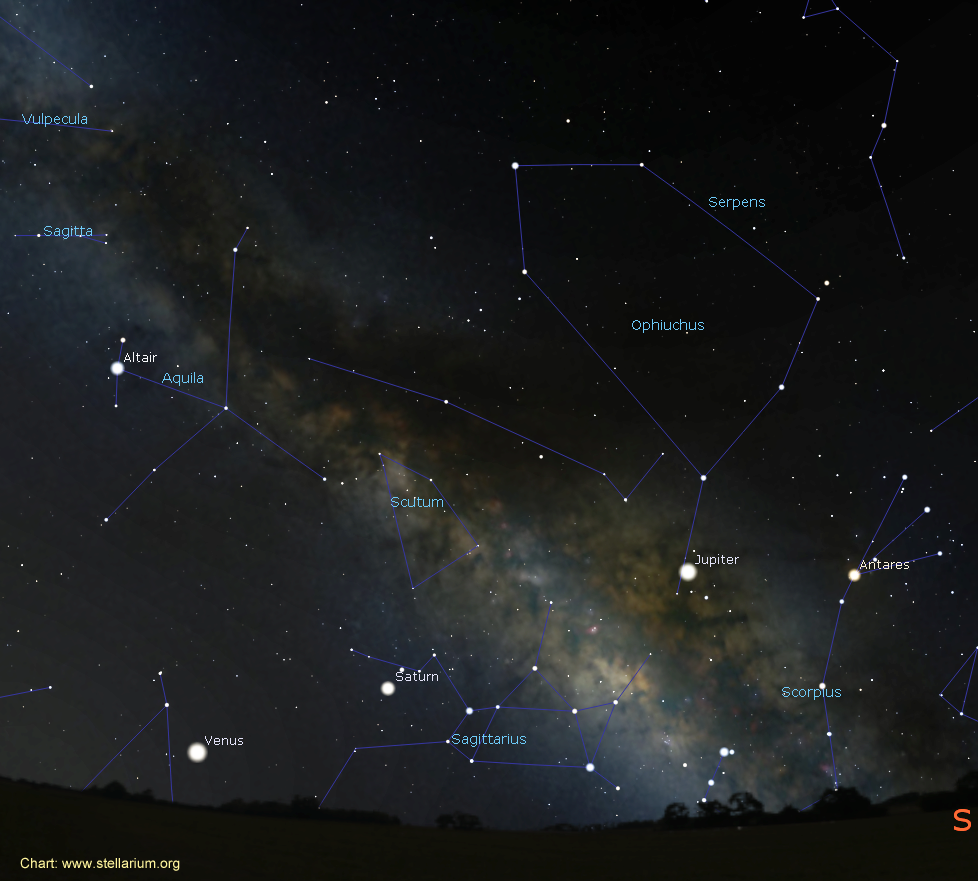Canis Major
Sirius is by far the brightest and closest visible star in the winter sky as seen from Canada. Depicted as the eye of one of Orion’s hunting dogs, it is only 8.6 light-years away and at magnitude -1.47 is a great daytime telescopic object. Along with the stars Betelgeuse and Procyon, Sirius forms the Winter Triangle. AKA, the Dog Star, Sirius is a binary with a magnitude 8.44 white dwarf companion nicknamed the Pup. The white dwarf orbits Sirius once every 50 years in an elliptical orbit that ranges in distance from eight to 31 astronomical units. The much fainter Sirius B is located very close to brilliant Sirius making it extremely difficult to spot. As you can see by the chart, the companion is almost at its farthest from its primary. I remember catching a glimpse of it back in 1979.
Located a few degrees to the south of Sirius is a lovely open cluster cataloged as M41. It is located 2,316 light-years away and estimated to be 12.5 light-years across. It makes a striking view in wide-angle binoculars and with wide-angle photography when you include Sirius. Nine degrees to the northeast of Sirius is Thor’s Helmet (NGC 2359). At a distance of 12,000 light-years, this 30 light-year wide structure is comprised of a bubble and filaments. In the middle is the Wolf-Rayet star WR 7 with an estimated brightness 280,000 times brighter than the Sun. It has a surface temperature of 112,000 K and is about to explode into a supernova.

Exoplanets seem to be everywhere and there is a naked-eye star located southwest from Sirius. Named Nu2 Canis Majoris or V2, this star is located 64 light-years away. At fourth magnitude, V2 should be an easy target to see. The exoplanet seems to be in the habitable zone where oceans (if any) would stay liquid. The planet orbits 1.9 AU from the parent star.
The planet Mercury is now at magnitude zero and low in the western sky after sunset. It sets around 7:00 p.m. local time on March 1 so you will only have a few evenings to search for Mercury as it is sinking fast. Moving up the ecliptic, we can still see the orangey hue of Mars.
Now at magnitude 1.3, the crescent moon will be almost seven degrees to the left of the red planet on March 11. For the first ten evenings of the March, look for the faint zodiacal lights in the west that follow the ecliptic towards the Pleiades. Photography will be your best bet to capture this slanted triangular glow of interstellar dust. After March 10, moonlight will interfere.

The other three naked-eye planets are found in the morning sky. Jupiter rises at 2:30 a.m. local time with the ringed planet Saturn a full two hours later and brilliant Venus, a half an hour after Saturn.
This year the vernal equinox occurs on March 20, which happens to be a full Worm Moon and this is why Easter is so late this year. The holiday occurs on the Sunday after the full moon after spring. Therefore, we have to wait for the next full moon on April 19 (Good Friday) with Easter Sunday on April 21.
This month’s new moon occurs on March 6 and Daylight Saving Time (DST) begins at 2 a.m. on March 10.
Until next month, clear skies everyone.
